When I started targeting long-tail keywords, I increased my search engine organic traffic to 173,336 visitors per month. You’re missing out on a lot of search traffic, if you’re not creating blog posts around longer search queries.
I encourage you to go after long-tail keywords, because they’re easier and more profitable to target. For most of them, you won’t face any significant competition.
There’s little doubt that the foundation of SEO is to implement a keyword research tool and integrate that list of keyword phrases \. But, all keywords are not created equal. Most top brands are beginning to see the potential in longer keywords, specifically long tail phrases.
For example, Amazon makes 57 percent of their sales from long-tail keywords. That’s because longer keyword variations – especially those with commercial intent – convert very well.
Head keywords, like “car insurance” might generate the most search traffic, if you eventually rank for them in the long list of keyword ideas. But, targeting such competitive keywords effectively is draining the best use of your search engine juice.
On the other hand, the “best car insurance company” may not have as many monthly searches, but because it’s longer than the head keyword, you could more easily rank on a search engine for it and start generating more blog traffic and leads.
If you plan your content carefully and integrate the right search engine terms, your blog posts can go viral and dominate the top search engine results. I’ll show you how to use long-tail keywords to do just that in five simple steps.
Step 1: Define Content Purpose
Before you can efficiently integrate long-tail search phrases into your blog posts, you have to define the purpose of your content. Having long tail keywords alone won’t do it all.
The sooner you get serious about content marketing strategy, the better your results will be. One statistic from Oracle reveals that “per dollar spent, content marketing generates more ROI than paid search.” In the case of long-tail keywords, becoming a long tail pro with a smart list of keyword phrases is fundamental.
If you want to build your email list, stop promoting your products and services. Instead, focus on providing immense value to your users. Give them a good reason to opt-in.
If you want social shares, then create better headlines and make it easier for readers to share your content. And, you can increase your blog post comments by asking questions and encouraging people to share their opinions about your topic. Better headlines often incorporate a list of keyword ideas.
You’ve also got to hone your skills, not because you want to appear smart or special, but because when you do, you’ll better understand how your audience feels and what you can do to meet their needs.
Being a smart marketer isn’t just about having writing skills or use a keyword research tool. It’s about being smart and strategic about content marketing. Your ability to take a piece of published content and get it to thousands of readers, within a specified time frame, will determine your success. Your readers will find you with an effective long-tail search, ideally in an organic way.
In my experience, it’s actually pretty easy to write articles. Anyone who reads a few tips can do it. The challenge is creating engaging content that makes promotion easier for greater search volume.
By naturally integrating long-tail keywords to generate direct and social media traffic, your search rankings and traffic will gradually improve to the point where you don’t have to be actively involved in marketing your blog.
Step 2: Understand Buyer Personas
Who are your target audience members? You can figure this out by creating buyer personas.
According to Stan and Stacy, a buyer persona is basically a visualization tool. It’s a representation of a specific ideal reader that you’d like to attract to your blog or site.
Creating and maintaining buyer personas makes content marketing easier and more effective and is a component of your keyword search tool. It helps you to avoid creating content for the wrong audience or targeting the wrong list of keyword phrases.
Personas make understanding your prospects much easier. You can see each pertinent fact about them at a glance.
And, the moment that you understand what goes on inside your customer’s mind, integrate long-tail keywords, improve search traffic and make all of your marketing more effective.
You do that by starting with personalized emails; remember, personalization usually improves click-through rates by 14%, on average.
Step 3: Research Long-Tail Keyword
Some marketers struggle to find the right long-tail keywords. They keep aiming at highly competitive head keywords and then wonder why their search traffic is not growing.
In my personal experience, long-tail search simplifies content marketing and improves its results. In December 2012, KISSmetrics received 142,149 visitors from long-tail keywords and I haven’t looked back since (and it’s now seven years later).
Longer variations of your keywords may have lower search volumes than head keywords, but their conversion rates are usually very high. This is the power of becoming a long tail pro; use the long-tail keywords to laser focus an audience giving buying signals in their search engine query.
That’s why you should use them, if you’re serious about acquiring customers for your online business, no matter what your niche might be. Serious buyers use a long-tail search.
Let’s find those long-tail keywords right now:
Step #1: Go to Ubersuggest and type your main keyword (e.g., car insurance) and click the “Search” button:
Step #2: Click “Keyword Ideas” in the left sidebar:
Step #3: Choose your long-tail keywords from the results list, by identifying keywords with four or more words.
Step #4: Filter the results in search of high volume, low SD long-tail keywords:
For this particular industry, which is extremely competitive, I set the SEO difficulty to no greater than 40, while keeping the search volume in the 2,000 to 7,000 range. Here’s what you get:
Not only are there 80 keywords that fit the criteria, but many of them are prime candidates. For example, “cheapest car insurance in Michigan” is extremely attractive. Here’s why:
- 5,400 monthly searches are more than enough to move the needle (more on this below)
- A relatively low SD of 34 shows that ranking on the first page is attainable
- A CPC of $37.89 proves that it’s a high converting keyword (typically, the higher the CPC the better it converts)
So, if you decide to target “cheapest car insurance in Michigan,” the next step is clicking on that keyword. Doing so displays the following:
This is a list of the top 10 search results for the keyword, complete with:
- URL
- Estimated Visits
- Links
- Domain Score
- Social Shares
There are a few things that stand out to me:
- Estimated visits per month for the top three spots are strong
- The average number of backlinks of page one results is 16
- None of the websites in the top five have done a particularly good job with social media
In other words, this is a long-tail keyword you can win. And if you grab the top spot, it’ll be good, on average, for more than 1,600 highly-targeted visits per month.
User intent vs. keyword targeting: There is a slight difference between what SEO used to be and what it is now. Keyword targeting is still crucial – Google hasn’t abandoned that yet – but the focus now is on the users who are typing those keywords.
First, the bad news: aiming to rank in the top 10 results for a particular keyword is no longer a realistic goal.
This is because the more you strive to occupy the #1 position, the more desperate you become and the more willing you are to engage in questionable SEO practices, which bears a significant risk of incurring Google’s wrath.
Instead, there is a new SEO mindset that you should adopt right now.
The new SEO requires caring about your users and solving their problems. This is why smart long-tail keyword use helps you with search engine results, not hurts you.
Step 4: Write Content Based on Selected Long-Tail Keywords
Content creation is a tough adventure, especially when you’re not a passionate writer. You can make the process more effective, however, by simply planting the right seeds in your content. Those seeds are the long-tail search queries that will cause Google to send you more targeted traffic.
After Google’s Panda update, businesses of all sizes started to invest more in content marketing, because they found that it’s the best way to attract and retain customers.
Simply reiterating keywords over and over to improve search rankings worked pretty well before 2011, but Google Panda and Penguin were game-changers. Long-tail search phrases don’t rely on repetitiveness as much as targeting.
But, make no mistake: understanding how to use a keyword research tool and targeting is still the basic foundation of SEO. You must still track the positions of your keywords in Google. However, you’ll notice growth in your search traffic, just by targeting long-tail keywords in a natural manner. Often, these keywords will not only generate visitors to your site, but they’ll be engaged visitors who have indicated interest in your product.
Keywords are a critical factor in the Google ranking algorithm. No matter what the latest ranking factor might be – mobile-friendliness, site speed, engagement – on-page keyword usage boosts your content’s search performance by 15.04%.
So, let’s examine how to naturally integrate long-tail keywords in our written content.
1). How to use long-tail keywords in headlines: According to MBA Online, every day we’re inundated with over 2 million blog posts and 290 billion emails.
No matter what you’re writing – blog posts, email subject lines, Facebook ads or anything else – the headline is a crucial element. Even a slight mistake can cripple your traffic or even piss off your readers.
If you can nail the perfect headline, you’ll be positioned high in the search results pages. Magnetic headlines will prompt your customers to click, read and eagerly respond to your offers.
Keyword-rich long-tail keyword headlines will ultimately improve your rankings and increase your blog engagement. Your target audience is looking for blog posts that will solve their problems and address the very keywords that they typed into Google’s search box. They don’t know it, but they are often doing a long tail search, thus when done right, your headline and search results are already speaking to their need.
WPBeginner increased its organic traffic by 20% in just two months. They discovered over time that longer keyword variations have the capacity to send 70% more search traffic because those keywords are less competitive and highly targeted to the users.
There’s no single rule for including long-tail keywords in your headlines, but I can show you a few tips that make your content flow naturally, which is exactly what a search engine is looking for in your inbound marketing campaigns.
By being natural in your headline (and your anchor text, when linking out to other sites), you can drive 20,000+ monthly visitors utilizing long tail search terms.
So, let’s integrate long-tail keywords into our headlines, right now. Follow this three-step process:
First step: Research and choose long-tail search terms. Let’s stay with Google Ads Keywords Planner for our example.
On the dashboard, type in your main keyword phrase (e.g., start small business) and click the “Get Ideas” button.
In the above screenshot, you can see the long-tail keywords that we’ll integrate into our blog post headlines:
- starting a small business checklist
- best small business to start
- steps to starting a small business
- help starting a small business
Second step: Model popular and viral headlines. It’s not enough to pick long-tail key phrases; you also have to identify viral content specific to your industry and then learn from it.
When you find headlines that have been shared thousands of times on Facebook, Twitter, LinkedIn, Pinterest and so on, it means that you can get great results, too – simply study them and incorporate the underlying strategies into your own content.
So, how do you find these viral blog post headlines? Visit BuzzSumo, input your main keyword (i.e., start small business) and click the “search” button.
The two viral headlines in the screenshot above are:
- 5 Simple Ways to Start a Small Business ~ 102,658 Facebook shares
- 6 Things I Wish Somebody Had Told Me When I Started My Small Business
~ 10,165 Facebook shares, 1,164 LinkedIn Shares.
Note: You can refer back to the long-tail keywords that we researched in the first step. In the third step, we’ll integrate them naturally into headlines modeled after the viral ones.
Third step: Craft your headlines, using the viral headlines as a model for your keyword research tool:
Original Headline: 5 Simple Ways to Start a Small Business
Keyword phrase to integrate: steps to starting a small business
Unique and keyword-rich blog post headline based on the model:
- 7 Steps to Starting a Small Business and Growing It
- 3 Simple Steps to Start a Small Business That You’ll Love
Original headline: 6 Things I Wish Somebody Had Me When I Started My Small Business
Long-tail keyword to integrate: starting a small business checklist
Clickable and keyword-rich blog post headline modeled on the original:
- 6 Things I Wish Somebody Had Told Me About Starting a Small Business: Checklist for Success
- 10 Lessons I Learned by Starting a Small Business: A Checklist for Growth
You don’t have to be a Pulitzer Prize winner to craft a clickable and keyword-rich headline, though it doesn’t take a lot to become a long tail pro.
Here’s a little-known secret: Many of the blog post headlines that have generated the most social shares for me were modeled on headlines created by others. When I find a catchy headline that makes me click, I’ll copy it, study it and create a unique and better one.
For example, if I’m stumped and don’t know what type of headline to write, I visit Buzzfeed.com and check out their latest headlines, then model my own after theirs:
Now, I can easily create better headlines that are unique and keyword-rich, based on Buzzfeed’s latest news headlines. Let’s do it:
Buzzfeed’s headline: Which Stoner Country Song Should You Toke Up To?
My unique headlines, with the right long-tail keywords:
- Which Small Business Marketing Advice Should You Follow?
- Which Blog Traffic Building Course Should You Invest In?
Buzzfeed’s news headline: 11 Texts That Will Speak to Your Soul
My well-crafted keyword-rich headlines:
- 11 One Way Link Building Strategies That Will Speak to Your Soul
- 11 Best Small Businesses to Start That Will Speak to Your Soul
- 13 Top Content Marketing Strategies That Will Speak to Your Soul
2). Use keywords in a natural manner: Brian Dean increased his search traffic by 348% in seven days, just by sharing case studies with his target audience in a natural way. He may be targeting a particular keyword, but that’s not the focus when he’s writing the article.
If you don’t want your hard work to be in vain, focus on using keywords in a natural manner.
This is critical because most long-tail keywords are unnatural – they don’t read or flow well. If you go ahead and use them as-is, your web page and blog could get slapped with a Google penalty.
For example, most of the keywords in the screenshot below don’t flow well and should not be used as-is in your headlines:
The long-tail keywords that are unnatural are highlighted above. Here they are:
- web design new york
- web design ny
- web design rochester ny
- web designers nyc
Note: Don’t use the keywords above in your headlines exactly as they appear. Your headlines may be keyword-rich, but your users won’t be happy. Thus, headlines such as the ones below are ill-advised:
- Top Web Design New York
- Best Web Designers NYC
You can still integrate the list of keyword phrases – just do it naturally. Your users will be excited to click and read your content:
- Top 10 Web Design: New York Web Designers You Can Trust
- Best Web Designers: NYC Companies That Specialize In Responsive Web Design
Note: In the eyes of Google, that colon (:) doesn’t in any way modify the keyword. In other words, “web design new york” is the same thing as “web design: new york.” But, the second set of headlines are much easier to understand and your users will appreciate it, thus, your post’s chances of being shared will increase.
3). Write introductions with natural keywords: A good introduction prepares the reader’s mind for the information in the article.
So many people write articles and stop there. But, smart content marketers know that after creating the content and publishing it, there is more to be done: you’ve got to promote it, monitor how far it’s gone and analyze the results. All of these tasks are easier if your introduction captivates your readers.
If you want your introduction to attract search users, naturally integrate the same long-tail search phrases they’re putting into search engines for into your content, as well as your headline.
Although there is no set rule for the length of your introduction, I’ve found that writing at least 100 – 200 words seems optimal, especially when you’re targeting a particular long tail keyword.
Great introductions are hard to come by. To make yours resonate with your readers, keep it clear and interesting, including the primary keyword in a natural manner. Here’s a typical example of an introduction in which the writer is smart about keyword insertion:
Notice how different long-tail key phrases were integrated into the introduction and the article in a natural way. From the above screenshot, the keywords you can quickly locate are:
- mobile friendly ranking algorithm
- mobile friendly test tool
- Google’s mobile friendly update
- mobile friendly pages
Let’s quickly write an introduction with some long-tail keywords in a natural way. Say you’re an SEO agency and want to create a high-quality article by targeting some profitable long-tail keywords while, at the same time, avoiding a Google penalty. Here are the simple steps to achieve this:
a). First step: Select your keywords, using Google AdWords Keywords Planner. Plugin the keyword that you want to rank for and click the “Get ideas” button. Google will suggest other low-competition variations of your keyword:
The target key phrases are:
- search engine optimization companies
- affordable search engine optimization
- local search engine optimization
b). Second step: Understand the user intent. Before you write the introduction, make sure you understand why users typed the keywords above in the search engine. What is their major challenge? What solutions are they looking for? And, how can you appeal to them?
Here’s the breakdown of the user intent behind each of the search queries above:
Search engine optimization companies: The searcher is interested in identifying the various companies that can help them manage and improve their site’s performance.
The searchers are not looking for the best – they want to know their options. At this point, the chances of these searchers hiring any of the companies you recommend are low, because the users aren’t ready to make a decision. They’re still learning – so teach them.
Some of the headlines that would work for these users, by appealing to the user’s intent, are:
- Top lists headlines – e.g., Top 10 Search Engine Optimization Companies
- Natural headlines – e.g., What to Look for in Search Engine Optimization Companies
- Question headlines – e.g., How do You Know the Best Search Engine Optimization Companies in the U.S.?
Affordable search engine optimization: The searcher who typed this keyword into Google may have a limited budget, but they still need an agency or individual SEO who can help them achieve results. Bear in mind that “affordable” is relative.
For small businesses, the word “affordable” may mean “$500 – $1000 per month”; for multinational digital corporations, $20,000/month may be “affordable.” Keep this distinction in mind, when you’re writing your content.
c). Third step: Write the introduction. I find it very easy to write an interesting introduction that includes keywords naturally because I’ve worked hard to acquire a deep understanding of my readers. I’ve become a long tail pro to meet their needs. You should do the same.
Headline: Top 10 Search Engine Optimization Companies You Can Trust
As an online business entrepreneur, you can generate a lot of customers and visitors from search engines. The biggest challenge most website owners encounter is the lack of SEO skills and expertise to do the job themselves. But the good news is this: there are affordable search engine optimization companies, some of which may even be local, that you can work with.
I’ve compiled a list of the top 10 below, not because they’re 100% perfect, but because they appreciate each customer that comes to them and have a long-standing culture of dedication to improving search performance for their clients. If you find these affordable search engine optimization companies helpful, you could share the list with your colleagues on Facebook, Twitter, etc.
If you carefully study the above introduction, you’ll notice that I integrated up to 4 keywords (underlined); two long-tails and two head keywords.
The introduction flows naturally and your readers will love it. Search engine spiders will also find the introduction relevant to the headline and reward you accordingly.
Note: I’m not in any way encouraging you to stuff keywords into your introduction. That act will get you penalized. In some cases, I don’t even care about keywords, yet they’re still there in my blog posts:
If you do care about specific keywords, make sure that your content doesn’t look artificial or manipulative.
If you’re a beginner, you can study blog posts of authority sites to see examples. Rest assured, Google is still concerned about on-page keyword usage.
4). Write subheadings with keywords intent: Subheadings clarify the promise made in your headline. Users usually scan digital content before reading it. If the subheads are weak or off-topic, they’ll leave and may not come back again. According to Gary Korisko, the recommended cure for content scanning is strong subheadings.
Subheadings are usually bolder and bigger than normal text. Most people prefer the <h2> or <h3> tag, depending on the specific WordPress theme and how it styles subheading elements. Google definitely takes into consideration what goes into the subheadings.
A few notes to keep in mind, when writing your subheadings:
Keep them relevant: Your subheadings should be relevant to the topic and your headline. For example, if your topic is about “website design,” then your subheadings should be, too.
Use LSI strategy: LSI stands for Latent Semantic Indexing. This basically means considering synonyms as well as your specific long-tail keywords, to avoid stuffing and indirect search manipulation. You can use an LSI keyword research tool to help with this.
After the Hummingbird algorithm change, LSI became exceptionally important for effective search engine optimization. Take the word Apple, for example:
Or, let’s say your keyword is driving web traffic and your headline reads:
How to Drive Web Traffic and Expand Your Online Business
Before you write your subheadings, find synonyms for the words “drive,” “web” and “traffic.”
=> Drive Web Traffic
Get online visitors
Improve site traffic
Generate website visitors
Gain blog traffic
Note: You could use any of these synonyms in your subheadings, but make sure that they flow naturally into the post and leave the rest to Google. The sophisticated Google algorithm will treat the keyword “drive online visitors” as meaning the same as “generate website visitors.”
5). Write a persuasive conclusion around a long-tail keyword: To further reiterate what your content is about, you should naturally integrate the main keywords that you target in your conclusion.
The screenshot below shows how I concluded my previous article, while still staying on track with the targeted keyword. This is good for both user experience and search engine performance.
I’m not alone in this approach. Most content marketing influencers – including Derek Halpern, Marcus Sheridan and Darren Rowse – conclude their blog posts by reiterating the keyword or topic in a natural way:
Note: This particular post is a guest post by Jerry Low, but Darren Rowse approves of this approach because it’s great for users and SEO.
Step 5: Create Your Anchor Text
The anchor text is the part of a text link that’s clickable. When you hover your mouse over the anchor text and click it, you’re taken to another web page, either on the same site or outside of the domain name.
Before Google Penguin, anyone could build low-quality links with exact-match anchor texts and still succeed. But, that’s no longer true.
The simple and effective rule is to diversify natural keywords as anchor texts. Here’s an example:
Say you want to build links from three guest posts to your web page, targeting the keyword “dropshipping business.” For your anchor text to appear natural and remain Google-friendly, you have to diversify it.
In a nutshell, your anchor texts should be mixed between:
- Site URL + exact keyword (e.g., https://yoursite drop shipping business)
- Brand name keyword (e.g., elite experts dropshipping guide)
- Generic texts + domain name (e.g., click to visit yoursite.com)
Whether you’re directly involved in creating content for your site or you manage authors, bear in mind that editorial links usually have the anchor text that Google wants.
This is because “editorial links” are earned by your efforts to understand your customers/readers and create top-notch content that they can’t get anywhere else.
They’ll share that content willingly. Who knows – the media sites (such as CNN, BBC, FoxBusiness, etc.) may even find your content interesting, especially when it contains controversial or newsworthy elements.
Highly linked posts from trustworthy media sites will send quality links and referral traffic to you, which would otherwise be impossible to get for most content marketers.
Conclusion
From personal experience, I discovered that it’s easier to integrate long-tail keywords in case studies than in any other type of content.
This means that instead of creating generic blog posts that may not be useful to your readers, focus on case studies and data-driven content.
Remember that search engine optimization has gone beyond picking a few keywords and wrapping text around it. Nowadays, you’ve got to continually study your customers, understand what pain points they’re battling with and craft high-quality content that will appeal to them.
For your long-term search engine success, follow the guidelines here to naturally integrate long-tail search terms into your blog posts. Do it like you’re talking to your customers one-on-one and focus on teaching them what they want to learn.
How have you integrated long-tail keywords into your content? How did that work for you?

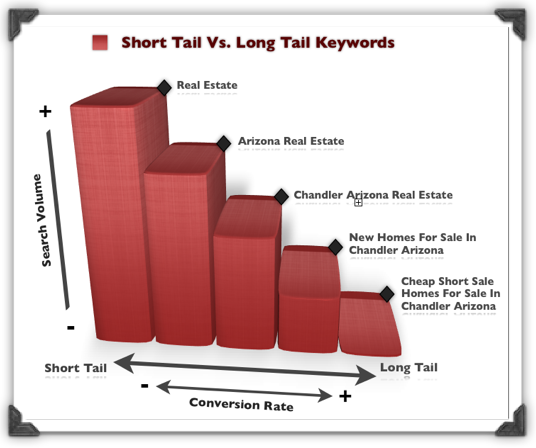



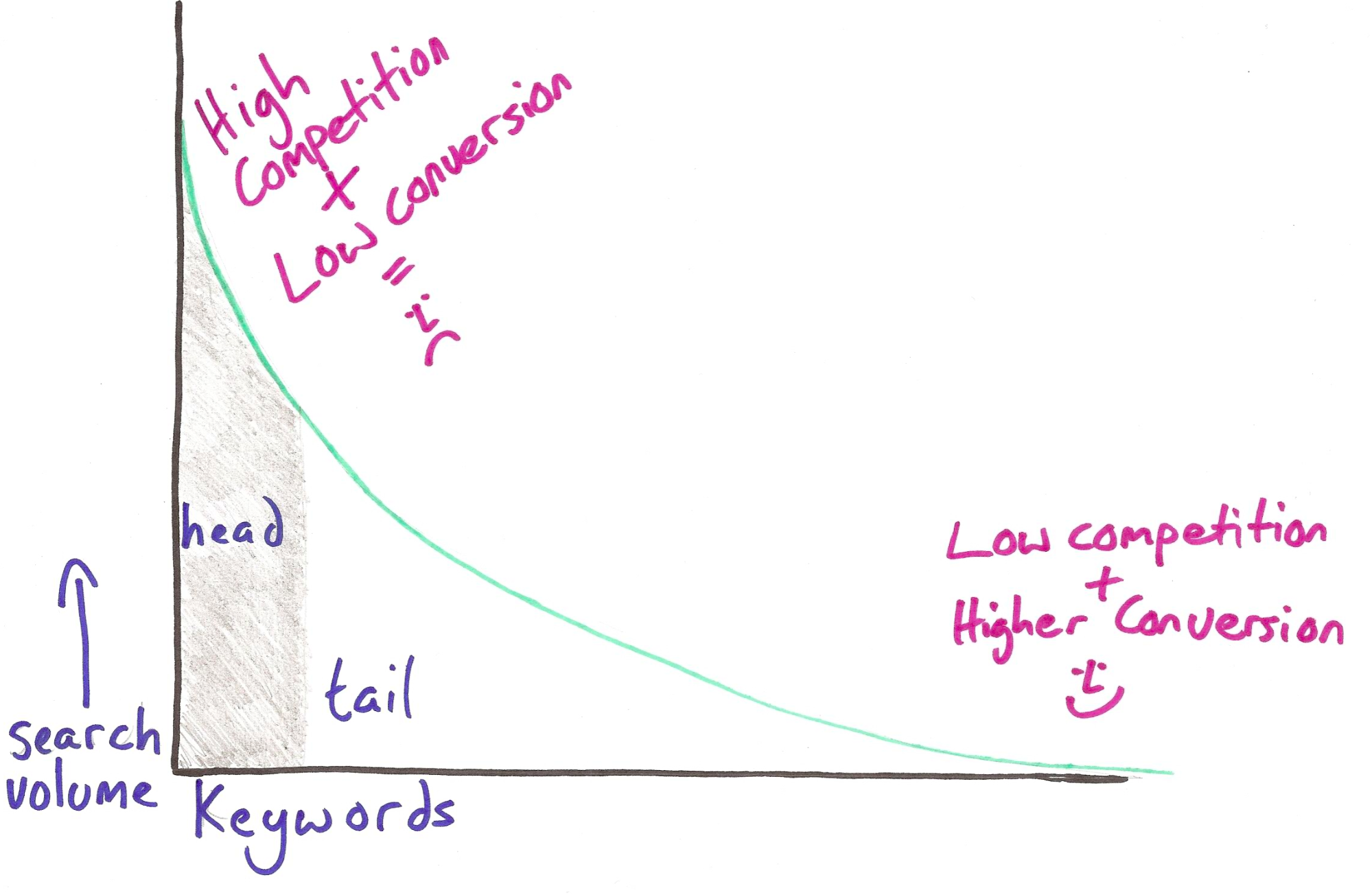






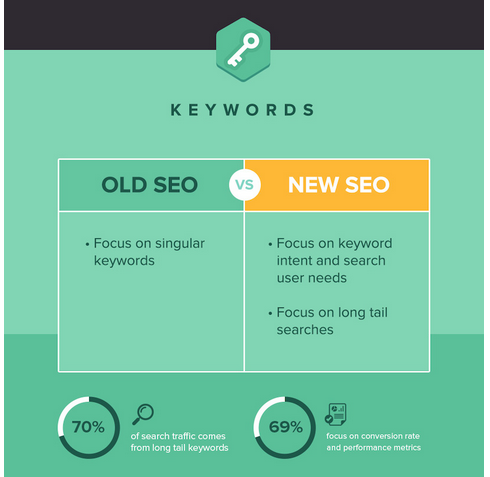








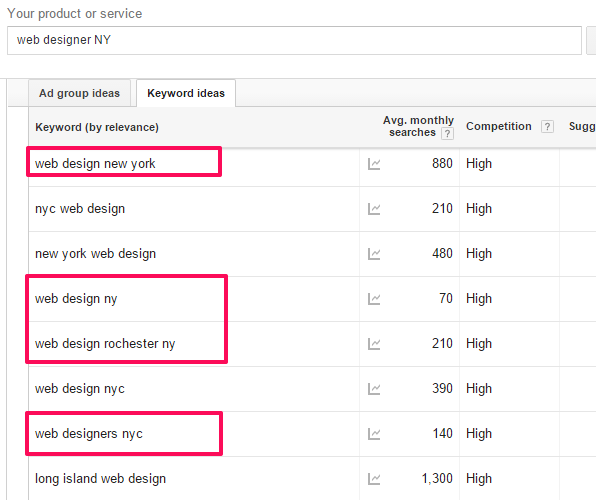

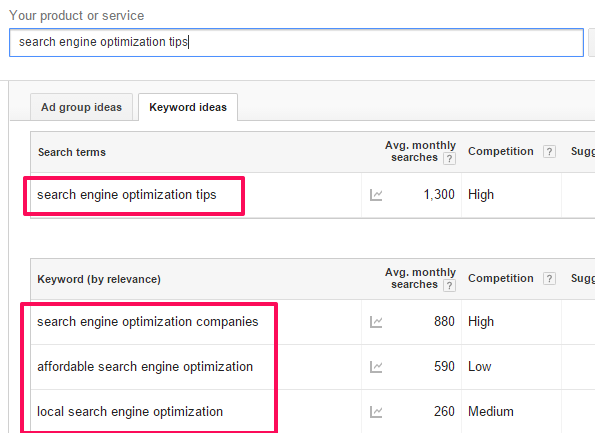



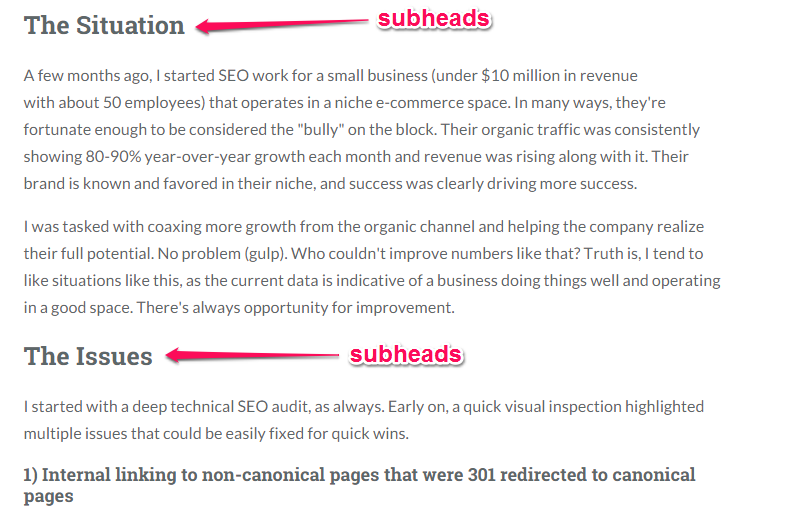

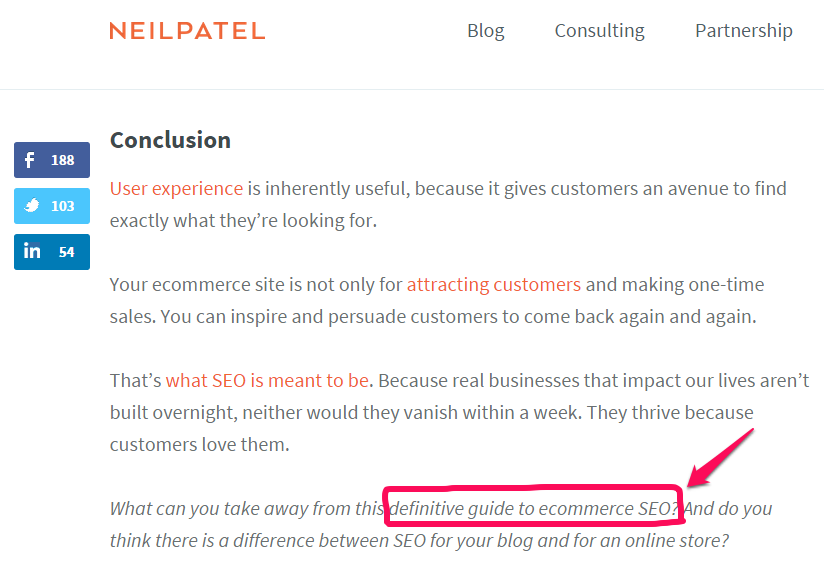
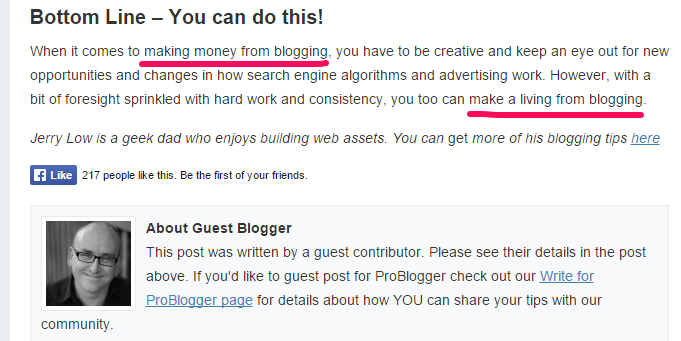
Comments (304)